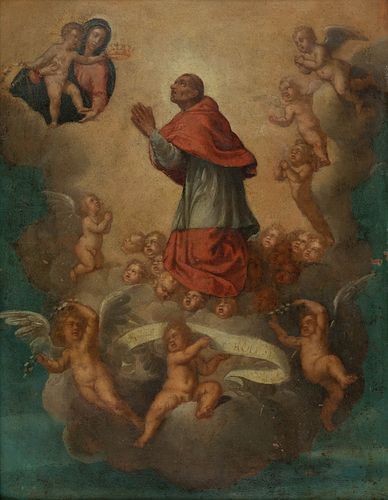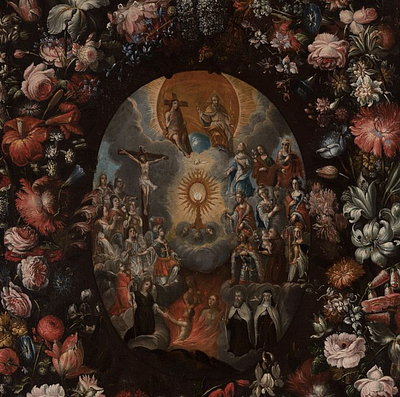Spanish School, XVIII century. "St. Charles Borromeo before the Virgin and Child". Oil on copper.
Lot 114
About Seller
Setdart Auction House
Carrer Aragó 346
Barcelona
Spain
Setdart Subastas was born in 2004 and is currently the first online art auction in Spain with solidity, prestige and reliability guaranteed by our more than 60,000 users. Setdart has a young, dynamic and enterprising team ready to successfully manage the purchase and sale of art works through custom...Read more
Estimate:
EUR€1,000 - EUR€1,200
$1,075.27 - $1,290.32
Absentee vs Live bid
Two ways to bid:
- Leave a max absentee bid and the platform will bid on your behalf up to your maximum bid during the live auction.
- Bid live during the auction and your bids will be submitted real-time to the auctioneer.
Bid Increments
| Price | Bid Increment |
|---|---|
| EUR€0 | EUR€10 |
| EUR€200 | EUR€25 |
| EUR€500 | EUR€50 |
| EUR€1,000 | EUR€100 |
| EUR€3,000 | EUR€200 |
| EUR€5,000 | EUR€500 |
| EUR€10,000 | EUR€1,000 |
| EUR€20,000 | EUR€2,000 |
| EUR€50,000 | EUR€5,000 |
About Auction
By Setdart Auction House
Jul 14, 2021
Set Reminder
2021-07-14 06:30:00
2021-07-14 06:30:00
America/New_York
Bidsquare
Bidsquare : OLD MASTERS
https://www.bidsquare.com/auctions/setdart-auction-house/old-masters-7202
Setdart Auction House sofia@setdart.com
Setdart Auction House sofia@setdart.com
- Lot Description
Spanish School, XVIII century. "St. Charles Borromeo before the Virgin and Child". Oil on copper. Measures: 41 x 33 cm; 56 x 47.5 cm (frame). A court of angels, in the lower plane, holds a phylactery and garlands, forming a first ascending circle, which is followed by a choir of seraphim. In the upper plane, Charles Borromeo in prayerful attitude is about to be canonized by the Child Jesus, whom the Virgin holds in her arms. We are before a typically baroque break of glory. Golden lights envelop the figures and model them in their rotund and sculptural forms. Saint Charles Borromeo was a reformer saint of the post-Tridentine era, cardinal nephew of Pius IV and archbishop of Milan. From an aristocratic family, he received the clerical tonsure at the age of eight, and soon after was sent to Milan to pursue humanistic studies with the preceptor Bonaventura Castiglioni. In 1559 he received a doctorate in law, and that same year his uncle, Giovanni Angelo de' Medici, was elected pope, an event that was decisive in the life of the young Charles. The recently appointed Pope Pius IV sent him to Rome and showered him with honors and dignities, among them that of cardinal. A man of extraordinary talent for government, his life changed radically when he was ordained a priest in 1563. He gave up his worldly tastes, such as hunting and music, and retired to the Jesuits. Nevertheless, he took part again in Vatican politics at the third convocation of the Council of Trent, where he was able to avoid serious conflicts. Later, when he was already ordained cardinal of Milan, the most famous event of the saint's life took place, which defines the heroic abnegation and sense of responsibility of his office: the so-called plague of St. Charles, in his city. Borromeo was away, but when he learned of the outbreak of the plague, he hastened his return to help the sick materially and spiritually. Once there, he begged for alms in the city and from his own patrimony he sold the precious objects he had left. He even gave up the hangings of his palace to make dresses. He personally went everywhere, visited all the neighborhoods and himself administered the last sacraments to the priests who succumbed in that work of charity, disregarding the danger of contagion.
- Shipping Info
-
In-house shipping available. Please inquire at admin@setdart.com.
-
- Buyer's Premium



 EUR
EUR CAD
CAD AUD
AUD GBP
GBP MXN
MXN HKD
HKD CNY
CNY MYR
MYR SEK
SEK SGD
SGD CHF
CHF THB
THB














